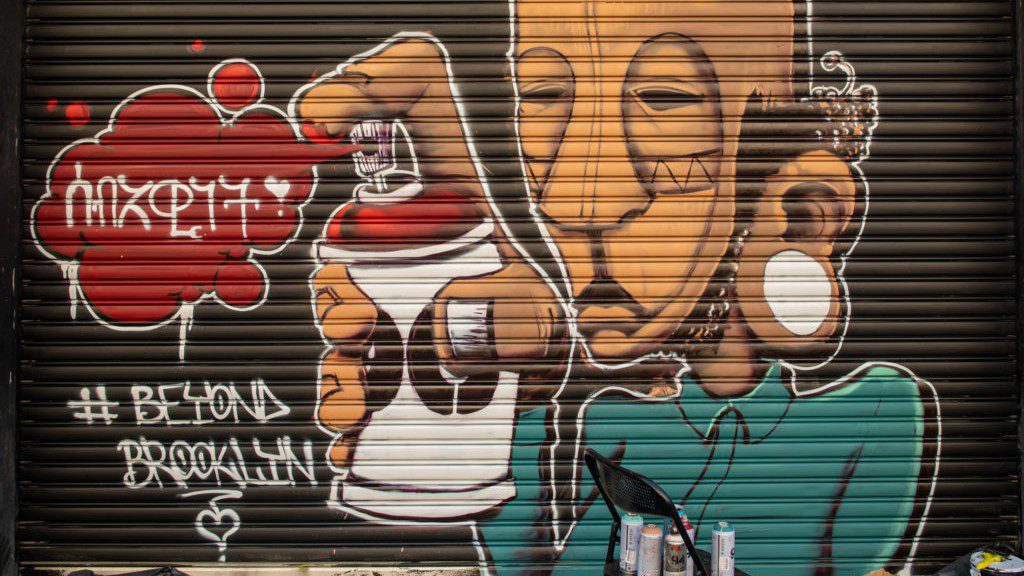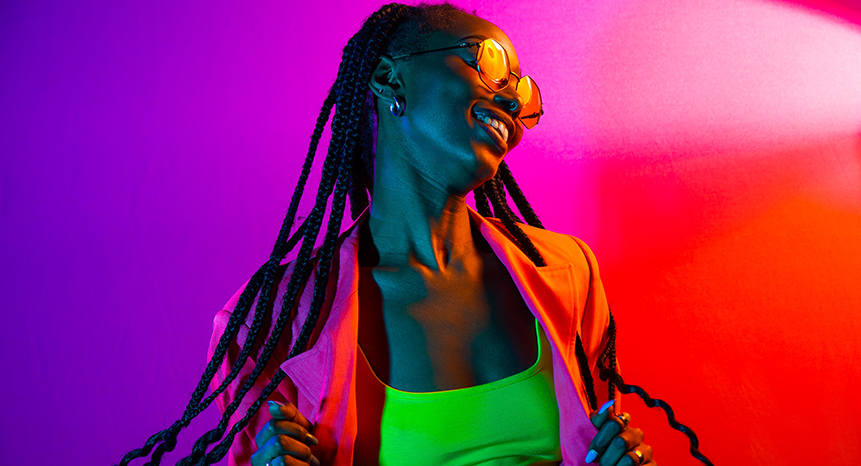
19 OCT EXPLORING ART AND ENVIRONMENT WITH NKOSINATHI NZIMA.
“Inkosi Unathi” is a multi-media creative from Johannesburg. His work speaks to the environment in which he lives and how that interacts with the wider South African reality that surrounds him. Nkosinathi’s work can be considered to be subversive in how he captures his subjects and what he chooses as his canvas. Read the interview below:
Tell us a little more about yourself and how your journey began.
My journey began as an exploration into my power/ability to create, as it does for most children. I’ve always felt the urge to draw something. When I was younger, my uncle – a painter – taught me how to paint, and I’ve kept at it since. I took my passion into High School, and the desire to create stemmed from my introversion. Drawing and painting were the best way to avoid anxiety-ridden social interactions that required engagement – like sports, which I’d skip to take extracurricular art classes instead.
Your artist moniker is inkosi unathi? Is there a story behind why you’ve chosen that name?
There is most definitely a story behind this.
I was fascinated by skateboarding and alternative rock scenes. All I wanted to do was become a part of that. So, I had a nickname inspired by an alternative rock band’s name – “ske99″(skegg). This name was perfect for me until I felt myself grow out of it. I needed something that reflected who I am and what I do.
Spending my gap year creating and studying clay work like pottery and sculpting made me realize how intense the power of creativity is. My ability to create a 3D pot or sculpture made me feel like I was on the right path. The peace I felt from this made me feel connected to my higher self, and I began to appreciate the power of my name. I then gave myself the name iNkosi-uNathi, which means King Nathi, and sometimes God, the creator, can be referred to as “King.”

You work across diverse media; walls, animation, sculpture, etc. What are the similarities and differences between all these formats?
These different mediums work so well together for me. I’ve learned something from each of them. They might seem different, but they share similarities, like having the final product of a visual masterpiece. The more time spent on either animation, graffiti/Street art, or even clay work will determine the amount of detail included in a piece.
Another similarity I can think of is that I can deliver messages and start conversations about specific topics depending on the concepts behind what inspired me to create that particular piece or animation. The few differences I can think of is that when painting walls, I’m using a flat surface which I could either use to make a 2D image or a 3D-looking one with the help of illusion. But when it comes to animation, whether 2D or 3D, is that I can create something mainly based on a story.
Animation is about storytelling through the use of moving images. This distinction stops them from being traditional art which is what our great ancestors have always used. Working with clay, I can mentally and spiritually feel myself connected to my ancestors and great ancestors since I’m pretty sure they had to use the medium for several reasons.
Of these mediums, which one is your favorite? If you had to choose one? (animating, sculpting, illustrating, graffiti and mural work, etc.)
I would have to pick Grafitti and street art. These mediums are vocal and accessible to people across economic lines. We live in a world where your social status determines the kind of treatment you get. The more you have, the better you’re treated. South Africa has load shedding as an added challenge that gets in the way of creating digital work.
In your bio, you mention growing up in an interesting part of Joburg. Where is that? and how does it speak to your work?
I grew up in Yeoville/Bellevue East. The place is so full of character and filled with tons of interesting people who come from all parts of Africa: mainly Nigeria, Zimbabwe, Cameroon, Ethiopia, and many more African countries. This cultural explosion has exposed me to our cultural differences and similarities. Yeoville is historical, and seeing how it has evolved and morphed into what it is today, is a testament to the diversity in South Africa. Most people don’t have many positive things to say about this place. It has become so ugly and dirty.



What would you say has been the greatest inspiration when creating your works?
The idea of taking “ugly” realities and creating beautiful visuals is what drives me. So many people are quick to remind me that I live in a dangerous place, but I see way more than that underneath that layer. The conversations, experiences, and number of intellectuals I’ve met in this place have influenced me to become as open-minded and curious as I am today. From the graffiti I’ve always noticed on these walls to the different art styles African countries have. Even the Ethiopian typography appearing in my work comes from this place.
I came across a post about your collaboration with Shade Brixton as I was browsing through your Instagram profile. Can you tell us more about it?
So the waste reclaimers project was a project by Tamzyn of Shade Brixton. The goal was to feed the reclaimers some breakfast while the graffiti artists painted their bags.
The part we played in this project was to create colorful work on these bags to highlight r these reclaimers who seem to be invisible to society’s eye. This project was documented by several journalists who published the images and interviews and shared them with the rest of the world.
What have some of your most memorable experiences as a result of your art been?
Some of my most memorable experiences would include the time I had the opportunity to work on an animation with a whole team – it was for a digital art festival hosted by Fakugesi. When we wrapped the project, we took a trip to Amanzimtoti, where we hung out and celebrated the final product we had produced.
Another memorable moment would be when I went to a graffiti jam in Riverlea and met an artist who introduced me to this animation school I’m currently studying in. The conversation I had with him is the main reason I’m there today.
You create such dope work across the board. How do you find people often react to your murals?
I get all kinds of reactions, but my mural work commands the most attention. The graffiti-related work and street art are where it can get a bit challenging, as not everyone thinks street art and graffiti are art. Some see it as pure vandalism. They would rather have a plain wall or some advert to promote some brand. The people I tend to engage with vary from the homeless man across the street to someone driving past in the fanciest car. Mostly, the reactions are positive. People show appreciation for the work we put up. Some get surprised to see us painting because it’s not every day you see someone painting graffiti or street art in broad daylight.


Who are some artists who inspired you when you first started, and would you say that list has expanded throughout your career?
There are several artists I will always give credit to. My list of artists has expanded alongside my career. I now know more artists, such as Mogau Kekana, African Ginger, Fok Alles(Cpt), Psalm1, Barry McGee, and Os Gemeos. The list can go on.
I’ve only named the visual artists who have inspired me to take the route I’m currently taking.
How has your collaboration with Brooklyn Gin been?
This collaboration with Brooklyn Gin was a good experience and a great way to allow me to speak about my work. It’s not every day I get the chance to explain what a piece means conceptually or what my work is about. These shows have exposed me to different people from all walks of life, and this experience will go a long way.




